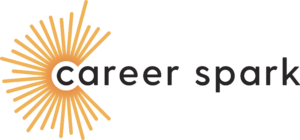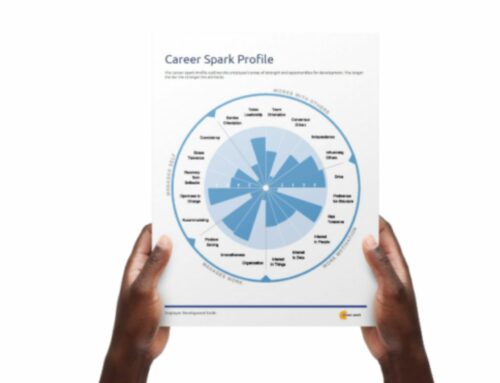Three fundamental shifts to reduce turnover and drastically boost retention rates.

Over the past year, the “Great Resignation” took the workforce by storm. Millions of employees left their jobs, and many businesses have been scrambling ever since to replace them.
Turnover is a costly issue for any employer. Experts estimate the cost of turnover “to be 33% to two times the employee’s annual salary, depending on the complexity of the position.” That means that a 1,000-person organization with an average salary of $50,000 and a 25% turnover rate could have turnover and replacement costs of $4,125,000 to $25 million per year.
Turnover isn’t a new issue, either. But when you multiply those costs by the sheer amount of talent lost to the Great Resignation, it’s pretty clear why reducing turnover has moved up to the top of almost every employer and HR leader’s priority list.
So how do you keep more of your people at a time when everybody’s jumping ship? Well, we hate to break it to you, but there’s no quick fix here. The pandemic might have added some fuel to the fire, but it’s not the reason why people are leaving. It’s just a catalyst.
At its core, high turnover indicates a mismatch between what your employees want from their work (and workplace) and what your organization delivers. And as you already know, achieving this coveted alignment is much easier said than done.
But don’t worry – it’s not too late to turn the tide. This post will outline three fundamental shifts employers can make to reduce turnover and drastically boost retention rates.
How to Reduce Turnover In Your Organization
1. Know that money doesn’t fix everything.
Right now, a lot of employers are addressing turnover by throwing money at the situation. Businesses are pumping up salaries and perks to try and entice new workers. A recent survey estimates that wage bills will increase by 6.9% this year and next, and wages for new hires will increase by about 10%.
Now, money is important. There’s no doubting that. We all have bills to pay, and nobody wants to be underpaid for their work. The problem is that the benefits of increased compensation are short-lived and have “no beneficial impact on self-motivation.”
An inflated benefits package may attract people in the short term, but it won’t make people stay. Countless studies show the opposite. For example, a recent study found that 61% of survey respondents would be willing to take a pay cut to keep working from home. Seventy percent of those surveyed also said that they would forfeit benefits like health insurance, paid time off, and retirement accounts to keep working remotely.
Another study found that 60% of workers would take a lower-paid job if it had a healthier working environment than their current job, with 35% of those saying they already had found a new job with better hygiene practices.
In short, boosting compensation may get you more people in the door, but if you don’t address the issues that are causing people to leave in the first place, they won’t stick around for long.
2. Get to the root of the issue.
Take a second to think about your organization. You probably have some departments that run more smoothly than others, right? Some may have more experienced teams, and others may have higher engagement. You might even notice that some departments are exhibiting a few turnover warning signs, like a lack of career development or advancement opportunities or below-average compensation.
But, be honest – can you accurately predict which of those departments, teams, or individual employees are most at risk of high turnover? Or how those specific talent losses would impact your bottom line? Now let’s say you could predict turnover. Would you be able to act on those insights early enough to make a significant change and stop people from leaving?
A lot of people analytics solutions can identify behaviors and activities that predict turnover. For example, they might show you that an employee’s productivity has decreased or they’re acting less like a team player, which are research-backed signs that someone is about to quit. However, the problem with these analytics tools is that they can only see what will happen. They don’t get at the why, and they don’t prevent the churn from happening.
This is the power of a predictive people analytics solution like Career Spark. Rather than implementing general employee engagement initiatives and hoping for the best, it will allow you to see which specific actions correlate with higher retention rates. You can also see which people are in your organization are most at risk of turnover, so you can intervene and support them before it’s too late.
What are the key drivers of employee turnover? What are the key characteristics of your longest-serving employees? What makes them successful? Once you clearly understand why people leave and why they stay, you can develop targeted strategies that will reduce turnover and improve retention rates for the long haul.
3. Be proactive.
Most organizations are very reactive to turnover. Employers are asking themselves, “How can we hire more people?” when they should be asking, “How can we keep more of the people we have?” or even more importantly, “Why would somebody want to stay with us?”
This is why employers need to rethink the idea of turnover completely. For one, many employers see turnover as an inevitability when research shows that more than 75% of employees who quit could have been retained. Additionally, not all turnover is bad, such as in cases of poor fit or performance.
So if we return to the queries posed above, an even better question to ask would be, “How can we keep more of our best people and ensure that they’re productive?” And to answer that question, you need to know why people leave and why they stay.
For example, research into employee turnover has revealed a host of factors that often influence someone’s decision to leave their job:
These include:
- A lack of appreciation
- Feeling burnt out
- Lack of flexible work options
- Wanting to work remotely
- Poor mental health
- Relationship with management
- Corporate culture
- Lack of engagement
- Unhappy at work
- Lack of career growth
We can easily flip these around to get the factors for why people stay. For example, according to LinkedIn’s 2019 Workforce Learning Report, 94 percent of employees say that they would stay at a company longer if it simply invested in helping them learn.
Younger workers are particularly interested in learning and development. LinkedIn’s research found that roughly a quarter of Gen Z and Millennials say learning is the number one thing that makes them happy at work. Over a quarter (27 percent) of Gen Z and Millennials say that a lack of opportunities to learn and grow would be the number one reason they’d leave their job.
We can see here that there are plenty of potential reasons why someone would stay or leave your organization. But to be proactive, you need clarity on what’s happening inside your organization, and that’s where Career Spark comes in. Investing in a predictive employee engagement solution like ours will give you the insights you need to create targeted retention strategies that meet your employees’ specific needs and allow you to keep more of your best people.
Employers need to address the root cause, not just the symptoms
Ultimately, if employers want to reduce turnover (and sustain it), they need to move beyond the symptoms and get to the heart of why people are leaving in the first place. You also need to understand that there’s likely not a singular root cause for turnover.
Knowing this, the key questions organizations need to answer are:
- Where is turnover hurting us the most? (i.e., do you understand the consequences of losing talent in different departments, roles, functions, or geographies?)
- Why are people leaving, and why are they staying?
- Who exactly is likely to leave?
When you can pinpoint where turnover is happening and why you can get ahead of it, and fortunately for you, this is precisely where Career Spark shines.
For instance, let’s say you find that you’re experiencing abnormally high turnover in your sales team, a high revenue-producing department. Of course, you already know the behaviors that correlate to turnover – checking out, showing up late, and giving the bare minimum – but thanks to Career Spark, you now know the characteristics of people who are most likely to leave.
You can then use these insights to identify who poses the most significant flight risk on your sales team and create a targeted action plan to retain them.
To significantly reduce turnover, employers need to think long-term. Competing on compensation may help you win the battle, but you’ll never win the war. There will always be employers who can pay more and offer bigger bonuses and benefits.
The best thing you can do, right now, to keep more of your best people is to make sure they have successful, dynamic, and exciting careers in your organization where they’re learning, feel challenged, and can grow. But to get there, you need to be prepared to ask the tough questions and make real changes that will sustain your employees’ happiness for the long haul.













